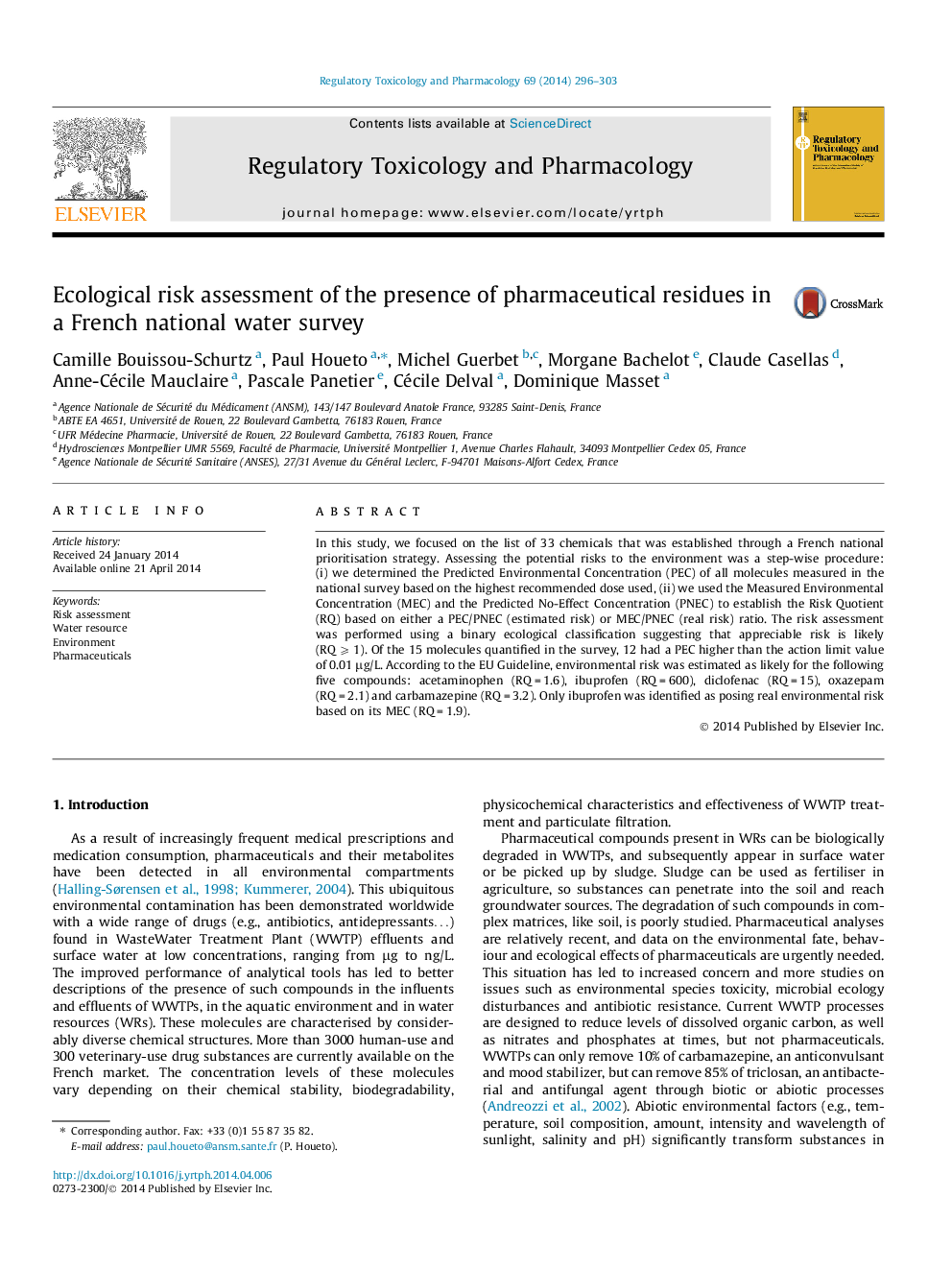| Article ID | Journal | Published Year | Pages | File Type |
|---|---|---|---|---|
| 5857030 | Regulatory Toxicology and Pharmacology | 2014 | 8 Pages |
â¢French survey of water sampling has detected 33 drug residues in water resources.â¢Ecological risk was assessed using a binary ecological.â¢Environmental risk was likely for 5 products notably acetaminophen and ibuprofen.
In this study, we focused on the list of 33 chemicals that was established through a French national prioritisation strategy. Assessing the potential risks to the environment was a step-wise procedure: (i) we determined the Predicted Environmental Concentration (PEC) of all molecules measured in the national survey based on the highest recommended dose used, (ii) we used the Measured Environmental Concentration (MEC) and the Predicted No-Effect Concentration (PNEC) to establish the Risk Quotient (RQ) based on either a PEC/PNEC (estimated risk) or MEC/PNEC (real risk) ratio. The risk assessment was performed using a binary ecological classification suggesting that appreciable risk is likely (RQ ⩾ 1). Of the 15 molecules quantified in the survey, 12 had a PEC higher than the action limit value of 0.01 μg/L. According to the EU Guideline, environmental risk was estimated as likely for the following five compounds: acetaminophen (RQ = 1.6), ibuprofen (RQ = 600), diclofenac (RQ = 15), oxazepam (RQ = 2.1) and carbamazepine (RQ = 3.2). Only ibuprofen was identified as posing real environmental risk based on its MEC (RQ = 1.9).
